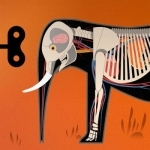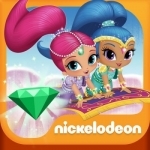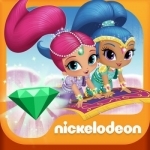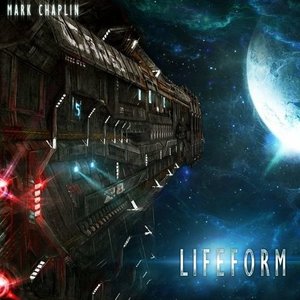
TapGlance Interior Design
Lifestyle and Productivity
App
TapGlance is a powerful and intuitive interior design app. Within minutes and without any prior...
Hadley (567 KP) rated The Haunting of Hill House in Books
Apr 19, 2019
The story is still worth reading because Jackson's story telling is something that is missing in literature today. The reader is introduced to characters that are different enough to be interesting; their development is just right that it leaves the reader satisfied. The story moves along well enough that the pace keeps us from getting bored. And each turn of the page keeps the reader guessing what is going to happen next- a must for any ghost story.
In 'The Haunting of Hill House,' Jackson mostly focuses on the character Eleanor - a woman who recently lost the sickly mother she had taken care of for years, to receiving an invitation for a paranormal experiment at the infamous Hill House. Eleanor also seems to be the main character affected by the house, not only having her name written on a wall, but also having her named called out by spirits during an automatic writing session with them.
Our first introduction to the Hill House happens as Eleanor arrives: "No Human eye can isolate the unhappy coincidence of line and place which suggests evil in the face of a house, and yet somehow a maniac juxtaposition, a badly turned angle, some chance meeting of roof and sky, turned Hill House into a place of despair, more frightening because the face of Hill House seemed awake, with a watchfulness from the blank windows and a touch of glee in the eyebrow of a cornice. Almost any house, caught unexpectedly or at an odd angle, can turn a deeply humorous look on a watching person; even a mischievous little chimney, or a dormer like a dimple, can catch up a beholder with a sense of fellowship; but a house arrogant and hating, never off guard, can only be evil. This house, which seemed somehow to have formed itself, flying together into its own powerful pattern under the hands of its builders, fitting itself into its own construction of lines and angles, reared its great head back against the sky without concession to humanity. It was a house without kindness, never meant to be lived in , not a fit place for people or for love or for hope. Exorcism cannot alter the countenance of a house; Hill House would stay as it was until it was destroyed."
We never see Hill House through any other character's eyes, and the viewpoints mostly come from Eleanor (a missed opportunity,I think). Everyone who arrives at the house feels uneasy about it: doors and curtains close on their own, unexplained banging noises down the hallways(only at night), the chattering and laughter of children, and with an oddly placed cold spot. Yet,to the reader's dismay, nothing is fully explained by the end of the story - no apparitions show up, no one seems harmed by anything unseen (although, the character, Luke, suddenly shows up with a bruised face that is never discussed), and the reader ends up wondering if this really is a product of mass psychosis. It almost seems like Jackson ended the story abruptly just to finish it(the book is only a little under 200 pages). She set up wonderful scenarios, but without explanations, we're left with a very empty feeling.
Nearing the end of the book, the doctor, John Montague, who has ran the entire experiment, has his wife,Mrs. Montague,arrive a few days later, who seems to know more about contacting spirits than he does: "The library? I think it might do; books are frequently very good carriers, you know. Materializations are often best produced in rooms where there are books. I cannot think of any time when materialization was in any way hampered by the presence of books." And with the arrival of Dr. Montague's wife, we get one of the major experiences in the entire book. Although her character is quite annoying- even seen through the eyes of other characters- she brings some of the most ghost story elements, one of which is her automatic writing sessions: "Planchette felt very strongly about a nun, John. Perhaps something of the sort- a dark, vague figure, even- has been seen in the neighborhood? Villagers terrified when staggering home late at night?" None of the characters, besides Mrs. Montague's companion, Arthur, believe her automatic writing sessions are real, even after Eleanor's name is brought up during one. As I stated before, without any explanations, the reader is even led to believe that nothing was meant to come of these sessions whatsoever.
The ghost story elements may not have been strong in the story, but the characters make up for them. They constantly question what they are experiencing and/or seeing, they question their surroundings, and they question each other -Jackson does an amazing job weaving paranoia into the story line.
One of the more shocking and unbelievable scenes is when Eleanor is suddenly not fearful of the house anymore: "And here I am, she thought. Here I am inside. It was not cold at all, but deliciously, fondly warm. It was light enough for her to see the iron stairway curving around and around up to the tower, and the little door at the top. Under her feet the stone floor moved caressingly, rubbing itself against the soles of her feet, and all around the soft air touched her, stirring her hair, drifting against her fingers, coming in a light breath across her mouth, and she danced in circles. No stone lions for me, she thought, no oleanders; I have broken the spell of Hill House and somehow come inside. I am home, she thought, and stopped in wonder at the thought. I am home, I am home, she thought; now to climb." It was as if Eleanor was a completely different person in just a few pages.
I do have a couple of problems with 'The Haunting of Hill House,' mostly centering around the use of run-on sentences and extra long paragraphs. The run-on sentences are a waste of time because Jackson seems to merely elaborate on something that could be easily explained or experienced with fewer words. The paragraphs, however, need to be broken up for scene transitioning purposes -when she transitions from one scene to the next, she can confuse the reader with them: one paragraph will have all the characters in the dining area, but in that same paragraph, just a few sentences down, Jackson has the characters suddenly in the parlor,drinking Brandy. Maybe the intention was to make the reader feel paranoid and uneasy like the characters in the book, but it was certainly not needed with the way of Jackson's style of writing.
With all that said, it's easy to see why this book is a popular classic. The writing is strong, using enough descriptions to put the reader in Hill House with all of its paranormal beings. And no matter who you are, you are able to find at least one of the lead characters as a favorite. I feel the book is a must-read for anyone interested in the paranormal, because Jackson brings out the occult interest that was going on around 1959 - when she published 'The Haunting of Hill House;' everything from cold spots to the use of a planchette for automatic writing.
I recommend this book, but if you're looking for scares, you must look elsewhere.

Houseplan Pro
Business and Lifestyle
App
*No Ads *Full furniture pack *iCloud backup *Print out your designs *Color Supported House plan...

Mammals by Tinybop
Education and Games
App
For all kids who love animals! Mammals lets kids explore the awesome and invisible wonders of the...
Emma @ The Movies (1786 KP) rated Home Alone (1990) in Movies
Sep 25, 2019
On December 7th Home Alone turned 28 in the UK. 1990... just wow. I'm feeling old enough without films I grew up with being called classics.
If you haven't considered your own Home Alone plan... well, what have you been doing with your life?! As a tip, if you already have a zombie apocalypse plan in place then it's very easily adapted, you just need a little less lethal force. And it's probably best for me to remind you not to actually try this at home, because I'm not convinced that Harry and Marv would have survived. (And if we take the results from Better Watch Out then you're probably looking at some kind of murder charge.)
In December they were showing Home Alone a few times at Cineworld so it would have been rude not to go at least once to see it. I'm really getting into the classic releases on the big screen, it's so much fun. The show I picked was basically populated by adults, just two children brought along by their parents. We were all roaring with laughter, the comedy never gets old.
The music of Home Alone is instantly recognisable and yet I always forget that it's one of John Williams' epic creations. You can't hear it without thinking of the specific scene in the film it relates to, and it's certainly influences a lot of films since. Something that again I hadn't really noticed until I watched the Christmas horror film, Secret Santa (review coming soon).
It always fills me with questions though... Do all Americans have telephones with cords that are about 20 feet long? How did Buzz manage to shove that entire pizza slice in his mouth? Why did Leslie ever marry Frank? Why is Jimmy in the shop so over enthusiastic? How does Kevin manage to create all his traps in such a short amount of time? And who on Earth leaves their house that tidy when they're leaving for holiday? Especially when you consider they left in such a hurry!
The idea is such a fun one, I can see why it's so popular all this time later. Watching it more and more though you do realise that Culkin's acting was pretty bad, but that just adds to its charm.
Watching it with a group of people who already love the film really made it a better viewing. We all laughed at the amazing prat falls from Joe Pesci on the ice and the walls of the cinema caved in slightly as we all took a sharp intake of breath as Marv stood on that nail. It's genuinely more fun to roar with laughter with other fans.
It's sad to think that Home Alone could never happen these days. (Although Google did bring us an advert that gave us a peak at what might happen. I've put the video at the end of the post.) Kevin probably has several smart devices that they could contact or track, the house would also likely be equipped with state of the art surveillance and alarm systems that would have alerted someone to movement and doors opening. On the flip side though it's quite fun to think about what sort of traps Kevin could be creating with the wonders of modern technology. I'd say lets get a petition going to see that happen but while Home Alone 4 was passable I don't think we really need any more of them.
What you should do
This should be in everyone's Christmas film rotation. If you don't watch it at least once a year... well... *shakes head*.
Movie thing you wish you could take home
Everyone needs those quick inventing skills, but I'm actually going to go with Kevin's other superpower... his amazing ability to make epic ice cream sundaes.

Shimmer and Shine: Enchanted Carpet Ride Game HD
Education and Games
App
Preschoolers learn basic math concepts on an enchanted carpet ride with Nick Jr.’s mega-popular...

Shimmer and Shine: Enchanted Carpet Ride Game
Education and Games
App
Preschoolers learn basic math concepts on an enchanted carpet ride with Nick Jr.’s mega-popular...

Happy Deepavali Diwali Greeting Cards Wish
Lifestyle and Social Networking
App
Celebrate the Festivals of lights and express your love to your loved ones by using and sending...
Paul Kellett (118 KP) rated Lifeform in Tabletop Games
May 1, 2019
So, what is the game?
Basically, it is Alien: The Board Game. A highly thematic one against many survival game where some of you play the crew of the mining ship Valley Forge trying to escape the clutches of an unknown alien killer before the ship self-destructs. Sound familiar? You bet, and it captures the tension of that well-known film perfectly.
I arrived part way through a game and Tristan kindly gave up his seat to let Me jump in. I basically new nothing about how to play, having only watched a couple of demo videos earlier in the week but with a crib sheet in front of Me explaining the card icons and a quick run down of what you can do in a turn, it didn't feel overwhelming and I was able to take over quite seamlessly. The game was close to the end and the alien player had already taken out most of the crew and was set up very nicely to ambush the rest of us. It wasn't long before the ship was adrift with just one deadly occupant...
How does it work?
We played a basic game, so some of the more meatier options were not included and we just had the simple task of gathering enough equipment and escaping in the shuttlecraft.
In the full game, players will be assigned personal objectives like downloading the ship's log from the data core or gathering specific equipment. This will add much more depth to the game as each player will be striving to achieve these goals as well as trying to avoid the alien and reaching the escape shuttle.
In the simple game however, we just had to focus on escaping. To do this, you need to collect the equipment tokens that are arranged in various rooms on the board. These are then placed on a track at the side of the board in various slots for coolant, energy cells, weapons, space suits and halon canisters. Most of these tracks have a minimum number of tokens needed before you can attempt to escape and any extra will grant bonuses like drawing extra cards or gaining a flame thrower.
In your turn, you get to perform one action so the downtime is minimal and the turns fair zip around the table, often before you've had a chance to take a breath and plan your next move.
All the actions are played from the cards you have in your hand, so you feel the tension of needing to get somewhere but having to wait until you draw a card that lets you run through multiple rooms.
Drawing cards. Now there's a thing. The ship's self destruct has been activated (naturally) and you only have 30 minutes until the ship blows up. Each time you choose to draw more cards into your hand, you slide the marker up the track, closer to the big bang.
I can't say too much about what the alien player can do as I didn't get to study that side of things too much but it certainly has some devious tricks up it's sleeve.
The alien player starts with two standees on the board. They look identical besides a little coloured sticker (this will be a set of symbols in the final game). He also has a corresponding set of tokens next to his player board and he will choose one of these to be the alien. The other standee (or standees, as later in the game there is the chance to get a third standee out) is a decoy so the crew, essentially seeing these as blips on their trackers, never know which is the real threat until it's too late.
There is a nice twist here, as, after making a kill, the alien player get's to reset his tokens and choose again which one will be the decoy and which will be the real killer. The alien player can also choose whether the kill was silent, offing the victim quickly and cleanly, or whether it is a nasty, brutal affair with lots of screaming. If the latter, then the other crew members hear this and all have to make a panic move into an adjacent room. This can be really useful if the crew are about to pick up equipment or possibly achieve an objective (I'm not sure if the personal objectives will be common knowledge or not sat this point).
The alien has various little trackers it can use from hatching more eggs letting it increase the amount of cards it holds, to taking control of the android on the crew which will then get placed on the board and follow a programmed track, killing any crew in it's way until it gets to the escape shuttle where it will start sabotaging various systems.
The alien also gets to place terror tokens and power out tokens on the board. If you enter a space with a terror token, you have to draw a card from the terror deck and these are always bad. A room with a power outage is dark and you can't run through it, you must stop your movement there. Other bad things can happen in the dark too.
What if I die?
Another neat thing this game does is avoid player elimination by cycling the crew. In our game, there were two of us controlling two characters each and when both of My characters died, I took one from the other player so we had one each. When that character was also killed (yes, I was not doing well...), rather than being forced to sit out the rest of the game, I could choose one of two secondary roles to play.
I could take control of the ship's mainframe computer which would allow me to do things like open and close bulkhead doors, slowing the alien down, allow the other players to draw more cards and various other useful things.
Or I could play the ship's cat. This was the option I went for and it was great. I could distract the alien, destroy some of it's eggs (so reducing it's hand size), place additional equipment tokens on the board or assist the other crew by letting them draw more cards.
It was this that that actually gave us the win as it was looking pretty bleak towards the end, but the cat actually managed to guide the last remaining crew member to a flamethrower and distract the alien long enough to make our escape.
What do I think?
This game is superb. Easy to pick up, but very thematic and definitely very tense. The decisions can be easy at times, but then you will hit a situation where the alien has you cornered and you must make some hard choices.
As I said, the theme just drips off every part of this game like a slightly corrosive drool. Our game started off really well - we managed to quickly gather a massive chunk of the equipment we needed to escape but the alien had been cutting the power and placing terror tokens closer to the escape shuttle ready for our eventual arrival and by the mid-game, we were feeling trapped and the alien was using the ventilation ducts to spring out and take us down one by one.
We were down to one surviving crew member and the ship's cat who, as I already mentioned managed to lead the human to the safety of the shuttle and espace.
Just getting to the shuttle isn't the end, however, there is one last twist (as in all good stories). At around the mid-point of the self destruct track, the alien get's to pick a card which is his estimate on what point prior to the ship blowing up we will reach the shuttle. If he has guessed correctly, then as we leave the stricken mining vessel, we find out that the shuttle has one extra occupant...
We were lucky and the alien player had guessed incorrectly, but had he been right, then there would have been a final battle aboard the escape shuttle and we may have been sending some deadly cargo back to Earth...
I can highly recommend this game and best of all, there is an expansion that adds an AI deck and a whole other set of objectives for solo play. I had a quick look at this and it looks like it will make for a very tense and really exciting solo game as well as a cool multiplayer experience.



